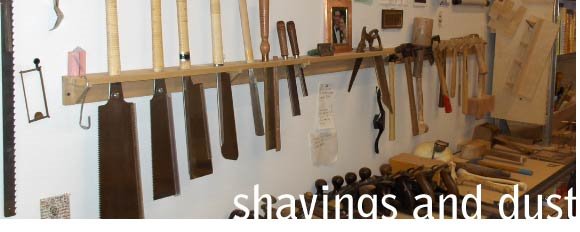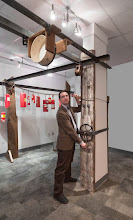when I was in high school, I had a friend named Jessica Stine. Now Jessica Hanff. It is her dogged tenacity that has kept us in touch all these years, and I am damn glad she has. Her folks lived then in a white farmhouse out away from town, and I used to go over there sometimes to hang out, and we would go ranging out over what used to be the farm. Over the river river and through the woods, indeed.
I have a distinct memory of wandering out in those fields one winter day. It was a gray, cold (to us) day, as I recall, and we came across an old tobacco barn. Post-and-beam, leaning, built on a foundation of fieldstone, unused for quite a while. There is a picture of it in my brain, clear as day. I have been thinking aboaut that picture over the last few days. That structure was built using the same kind of tools and methods as the one I am working on.
When you walk in the front door of this little house in Chester, there is a vertical beam dead in front of you that is supporting the second floor. It is not quite vertical, of course, but strong enough, and has a gentle, graceful curve on the side facing the walkway next to it. I think that curve has been worn in there over the years by people walking past from the front of the house to the back. It is a breathtaking record of this house and its occupants. I love walking by it.
My job yesterday and today is upstairs. A pine floor was laid this past summer, and is now an eloquent lesson in wood science (which I know is why you read this, these lessons in wood science). See, wood moves. Always. Even after it is felled and seasoned, the cells in the wood that used to take water and nutrients up and down the trunk of the tree continue to absorb moisture in the humid months and divest themselves of it in drier ones. This makes the wood swell and shrink in an annual cycle. Most traditional woodworking techniques were devised centuries ago based on this knowledge; frame-and-panel doors, cabinet construction, decks of wooden boats, tables, chairs, houses, all of them were built according to rules that every carpenter and woodworker knew to be true.
In the time since World War II, we have developed materials (some of which are made of wood) that do not move: Plywood, Medium Density Fiberboard, plastics, foams. As these have become the builder's materials, the knowledge of and repsect for the fact that wood moves has been shoved out of common parlance. You slap a sheet of plywood down on a laminated beam in a modern house, and it is not going to move ever. But a career doing that has made carpenters less aware of what happens when you use honest-to-god wood. Like, real wood really froma tree. Bringing us around to the job I am doing.
The floors in two of the rooms upstairs were laid in the late summer (pretty humid time) in pine planks that had obviously been kiln dried extremely rapidly and not allowed to season. Now that the heat is on, and the wood has had some time to divest itself of a lot of moisture, pretty wide gaps have opened up, some over 1/2" which is enough to make walking across the floor uncomfortable. My job: custom make tapering or wavy strips of pine and glue them into the cracks, leaving a consistent gap so that when summer comes around, there is still room for the planks to swell again.
It is not swift work. Definitely a good "slow. down." job.
Ultimately, I am told, there is going to be air conditioning in these rooms, so the thought is that the wood will move less, as humidity and temperature will be more constant. I am, to say the least, skeptical. The thing is, if the flooring had been seasoned properly, and had been installed in the spring in a more concientious way, this band-aid of a job would not be necessary. Instead it was probably felled in the summer when it was full of moisture and rush-dried in a klin, and sold when the moisture content was "within acceptable range," but I bet you a dollar it was on the high side of that range. So it has dried and shrunk dramatically over the last few months.
Every time we think we can do whatever we want, without consulting Mother Nature, every time we think we can bend the ways the world works to our tiny whim, we are proven wrong. It may work for a little while, but the end result is always that nature wins out. It is a lesson that we seem to continue to resist learning.
Subscribe to:
Post Comments (Atom)


1 comment:
And now I live in a 1930's bungalow with, yes, 1/3" to 1/2" gaps in the wood flooring. But you forgive the changes in 70 year old floors that your clients must not find so charming in a brand new floor.
reading this makes me think about how vain it is to think we are above or beyond the impacts of Mother Nature in our abodes. Water will always win, no matter how clever we think we've become.
In the first year at this house, I took a pencil and marked where the cracks in the plaster stopped on the driest coldest days of winter, so I could measure if they were worse over time or just the sign of expansion and contraction with the seasons. When a contractor doing patch work tried to fill the cracks in the summer, the pencil mark disappeared, but the crack came back the next winter. I can see the history of vain interventions written on the floors as well - cheap flat-top nails driven into the floors to hold them in place, to stop movement or squeaks, or just to make someone feel like they were the one in charge. Wood putty wedged in the worst gaps. I'm guessing no one really understood the underlying mechanics. Years later these nails work up, catch socks and soft foot soles, but the expansion/contraction and weathering of time were never put in check.
i find it easier to embrace the foibles of old houses as I understand them more. They have stories - some I will never comprehend, such as why the whole house was plumbed for the convenience of installing an ancillary (and soon dingy) toilet in the basement (running 2X as much iron pipe as necessary in the process), but I'm trying to listen.
Post a Comment